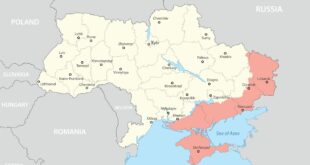Rameen Siddiqui
“The future of humanity and our planet lies in our hands. It lies also in the hands of today’s younger generation who will pass the torch to future generations.” – 2030 Agenda
Introduction
The youth comprise more than 50 percent of the world’s population, a key point in demographic growth, their participation and engagement in global policy-making mechanisms are instrumental now more than ever. Young people not only hold the best potential to fulfil the promises of sustainable development for building a better world, but they’re also the ones most vulnerable to the repercussions of the global crises in all social, political, economic and environmental realms. Today’s youth-led generation possesses the best chances of mobilizing efforts to reduce poverty, overcome systemic cultural barriers and inequalities, mitigate the effects of climate change and concomitantly achieve Sustainable Development Goals (SDGs).
The nature of the multifaceted crises the world is immersed in currently evinces the urgency to recognize its disproportionate impacts on the youth and future generations as well as the democratic imperative to address youth rights, needs and aspirations. A deeper acknowledgement of youth as a driving global force is desperately needed by the political institutions and governments that envision youth as the torchbearers of sustainability. They would not only be the beneficiaries, but architects of development in the world driven by the ideals of sustainable development.
Harnessing the Power of Youth for Sustainable Development
As the youth population growth rate remains significantly high in developing countries, we are looking at a new generation that will be diverse and capable of leading change across all fronts of sustainability. Young people are generally the earliest adopters of new technologies and innovations, therefore able to take advantage of emerging trends in Information and Communication Technologies (ICT) to initiate and drive change. Provided with the necessary skills and competencies, young people can be a driving force for supporting the development and effectively contributing to peace and security.
There are several ways young people are currently contributing to the achievement of the SDGs. It includes helping to deliver programs tailored to real needs in ways that benefit in terms of efficiency, equity, economy and sustainability. Their ability to seek out partnerships and collaborations to spread the message of the SDGs across, as active citizens monitoring and holding the governments accountable, mobilizing others to contribute as active citizens. It also includes their capabilities to contribute towards sustainable development policies or legislation that support all 17 SDGs and envision how national policy development, implementation and evaluation of progress can be achieved differently.
Two major factors explain the not-so-sudden rise of youth-led activism; First, as mentioned before, the demographic growth of youth is a key point with young people accounting for more than half of the world’s population, statistically, they’re destined to matter. Second, the shared common struggles among the youth who, both in developed and developing countries face high levels of unemployment, gender inequalities, systemic racism and cultural barriers and are often politically marginalized. Another huge factor contributing to the rise in youth engagement in global policy is the growing distrust in the current leadership and lack of confidence in political institutions and leaders.
Youth 2030: The UN Youth Strategy
Committed to strengthening its support and capacity to meet and deliver more effective results with and for young people, the UN Youth Strategy acts as an umbrella framework to guide the entire UN mechanisms as it steps up its collaboration with and for young people across three main pillars – peace and security, human rights and sustainable development, in all contexts. The Strategy aims to facilitate increased impact and expanded, global, regional and country-level action to build agency and advance the rights of young people in all their diversity around the world vis a vis all-inclusive and participatory processes.
Through its Youth Strategy, the UN seeks to become a Leadership Example, Knowledge and Innovation Pioneer, Investment and Solution Catalyst and Accountability Leader, by converging towards commitments and giving life to each of these pillars.
To do so, the UN must intensify its evidence-based advocacy, policy engagement and partnership and programme efforts to scale up international, regional and national commitments, and prioritize, invest in and empower young people. In this regard, the UN has outlined key interconnected priority areas which will be operationalized and further substantiated through the Strategy’s action plan. These include Engagement, Participation and Advocacy, and Informed and Healthy Foundations. Economic Empowerment through Decent Work, Youth and Human Rights and Peace and Resilience Building.
Young people’s empowerment, development and engagement is an end in itself, as well as an indispensable means to build a better world. The UN recognizes that it cannot be achieved without the engagement and participation of the youth of the world ensuring that they’re not only heard but understood, and not only engaged and supporting but leading the global policy efforts and processes.
Tapping into the Youth Dividend: Advancing Meaningful Youth Participation for Building Back Better
Political institutions and governments now recognize the significance of youth participation, especially in developing countries, as a driving force for change. At least on paper, the governments have set to strengthen their capacity to engage and empower youth and benefit from their ideas and views, to invest in young people to help tackle skill shortages and encourage innovation, creativity and risk-taking. There are various ways in which the ‘youth dividend’ can be optimized efficiently.
First, giving young people a seat in spaces and spheres of influence. The progress towards the SDGs can only be accelerated through the commitment to respect and listen to the voices of young people, coming from diverse socio-economic backgrounds. Policymakers should therefore ensure that young people are brought into the inner circles of decision-making, including the government, private sector and civil society.
Second, investing in education and knowledge sharing is crucial for achieving transformative change. Traditional forms of education and be combined with new, inclusive approaches (intergenerational knowledge, local and indigenous knowledge). For youth to be effective citizens, they need to understand how political and economic decisions are made and what role they hugely contribute. This requires professional training programmes as a viable strategy to provide the youth with the necessary skills to tackle systemic, long-term challenges.
Third, building trust towards the youth, by bringing youth communities and youth-led organizations into project planning to facilitate a gradual yet steady transfer of responsibility to younger generations. Platforms like the UN Youth Programme and ECOSOC Youth Forum are cardinal in mobilizing youth representation at high-level policy-making platforms, providing them with an excellent opportunity to participate in relevant meetings at a global level.
Lastly, to utilize youth potential to the fullest, they must be provided with a safe environment that safely guarantees their full participation and freedom in governance, peace and democracy. Young people have often cited violence, in its many forms, including corruption, lack of physical security, and misuse of power as hindrances in their path to adequate representation and empowerment. Policies should aim to incorporate critical youth priorities and be designed to mainstream effective, evidence-based youth mobilization.
Conclusion
Achieving the 2030 Agenda will require strong partnerships between young people and stakeholders so that the challenges faced by the youth are addressed, their contributions recognized and they are included at all levels of decision-making. While their potential, both in numbers and ambitions, is constantly growing, the youth alone cannot bring widespread transformative change without the support of the government, political institutions and civil society organizations. Common and coordinated efforts in rejuvenating political agendas in sustainable development are the need of the hour to build a secure and better future for generations to come.
 Geostrategic Media Political Commentary, Analysis, Security, Defense
Geostrategic Media Political Commentary, Analysis, Security, Defense





